State of the Edit in 2012

Roaring into 2012, the "State of the Edit" sector seems very robust. Top industry experts were good enough to share their perspectives on where we are and where editing is going.
The explosion of source material options facing today's editors impresses Al Mooney, product manager, video editing at Adobe Systems. "Almost everyone is walking around with some kind of digital camera in their pocket," he said. "Since everyone can record video and also watch it on portable devices, it's the editor who sits in the middle trying to make sense out of all of it. So we feel it is important to make the learning curve as shallow as possible so everyone can get access to even the most sophisticated edit systems."
"2011 was a year of upheaval in the editing community with the dramatic democratization of editing software juxtaposed with the increasing demand for rich media," said Maurice Patel, entertainment industry manager at Autodesk. "This was in turn fueled by the rapid growth in online viewing. The resulting expansion in the need for practical post production is creating new opportunities for professional editors to distinguish their own unique creative contribution because the skill of great visual storytelling has become more important than ever."
OPEN PLATFORMS
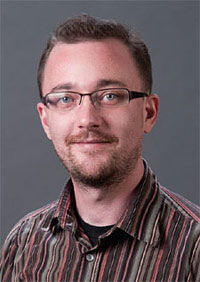
Al Mooney, product manager, video editing at Adobe Systems
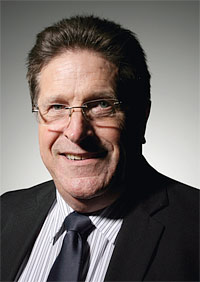
Ed Casaccia, senior director of marketing, Grass Valley "When we look at the State of the Edit this year we feel that having open platforms is key so editors can access third party I/O options," said Adam Green, senior director of post and pro segment marketing at Avid. "The implementation of Thunderbolt connectivity is going to enable even laptops to handle the best professional video. Add in the increasingly inexpensive portable storage options that are becoming available and now an NLE on a laptop can satisfy the most demanding video editing requirements all the way up to stereoscopic 3D."
"We are finding that customers are more interested than ever in being able to move projects from one system to another," said Boris Yamnitsky, president and founder, Boris FX. "Edits started on one NLE are often finished on another, usually on different workstations. Especially when it comes to visual effects work, many systems offer different tools that editors need to be ready to use to their best advantage. More than ever, that means we need to be able to easily translate a project between platforms."
For Andy Liebman, founder and CEO of EditShare, the most significant evolution in editing has been the increased collaboration that is making the process more efficient. "We are seeing greater distribution in post production, aort of a 'divide and conquer' approach," Liebman said. "Even in a newsroom, journalists can access shared storage to help them edit their own packages while other specialists contribute by creating graphics or finding archived clips. That way, everyone involved in post production can participate at their own skill level."
THE FINAL CUT EFFECT
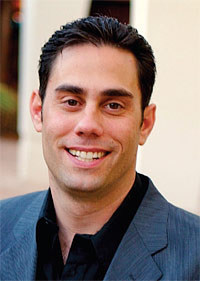
Adam Green, senior director of post and pro segment marketing, Avid
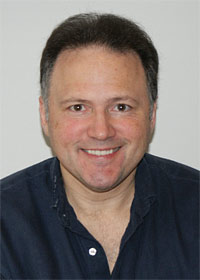
Leigh Herman, director of business development, Sony Creative Software The editing community is benefiting from increased competition after one significant player decided to change its target market. "The release of Final Cut Pro X last year was considered by many the departure of Apple from the professional editing sphere," said Ed Casaccia, senior director of marketing at Grass Valley. "That has opened up significant new areas of growth for both us and our competitors. As a result, this year's State of the Edit will be governed by how NLE manufacturers respond since professional editors are more open than ever to trying new systems."
For Andy Warman, senior product manager for servers, editing and graphics at Harris, giving their Velocity edit systems the ability to access licensed codecs such as Avid's DNxHD has greatly increased their functionality. "In addition, we hear a lot of talk about news editors needing to access social media formats like those recorded either by handheld HD cameras or even iPhones," Warman said. "That is increasing the call for being able to import all possible media directly to the timeline without cumbersome transcoding, and then output the final package to multiple platforms simultaneously."
"It seems to us that editing has pretty much been commoditized," said Philip Nelson, senior vice president of artist media relations at NewTek. "Most of today's NLE's are on par with each other, so the trend we see in the State of the Edit is the need to develop more content. Even cutting a real time multicam event can involve 'live to drive' editing where each camera is recorded as an iso and used to sweeten the live switcher cut. A lot of the reality shows are using this technique to help them produce their product under tight deadlines and strict budgets."
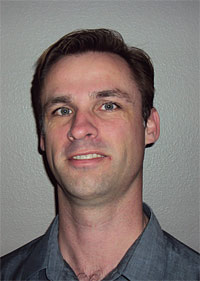
Andy Warman, senior product manager, Harris Improving audio editing has been a major trend for Leigh Herman, director of business development at Sony Creative Software. "Many NLE's have enhanced their audio tools significantly," Herman said. "Support for virtual studio technology audio plug-ins lets editors produce high quality stereo and surround sound mixes on the same platform as they cut the video. That's especially valuable when budgets won't permit outside sweetening. On the video front, the wide range of recording formats and acquisition devices continues to create new challenges for NLE manufacturers. And, of course, being able to author to Blu-ray Disc has become part of many editing packages."
According to Steve Owen, marketing director at Quantel, editors need the ability to include the same graphics that are produced live in a real time graphics systems when finishing edited packages. "But it's important that the editor has the tools to do it all from their NLE timeline," Owen said, "which means choose a graphic, populate with relevant text and place it right in the edit. Being able to accomplish this all right from the editor UI is a huge time and resource saver."
The 2012 "State of the Edit" survey revealed that more than ever the excitement in digital content creation resides in the edit bay."
Jay Ankeney is a freelance editor and post-production consultant based in Los Angeles. Write him at JayAnkeney@mac.com.
The professional video industry's #1 source for news, trends and product and tech information. Sign up below.
